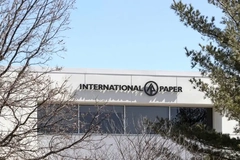PakTech sustainability officer explores fiber versus recycled plastic debate
A study commissioned by PakTech has found discrepancies between perceptions of environmentally sustainable materials and practices in the packaging industry.
As part of the research conducted in the UK, Germany, France, Spain, and Italy, PakTech surveyed 500 packaging experts in roles ranging from marketing to procurement.
Packaging Insights speaks to Gary Panknin, sustainability officer and supply chain manager at PakTech, about the study findings and their potential implications for the packaging industry.
What is the most notable finding from PakTech’s research?
Panknin: What stands out is the difference between perception and reality around recycled plastics. While most respondents agreed that plastic remains essential in CPG sectors, recycled plastics still face barriers to broader adoption. This is largely because many see alternative materials as the more sustainable choice, regardless of the specific application.
However, the data tells a different story. For example, recycled plastics like recycled high-density PE (HDPE) have a much lower carbon footprint than paperboard in beverage applications. It challenges the simplistic assumption that “less plastic is more sustainable,” and shows why life cycle data is so important in making smarter packaging choices.
Can you tell us more about your findings on companies’ ESG targets and compliance?
Panknin: The biggest disconnect is in how those ambitions translate into day-to-day decisions. Many companies set ESG targets around smarter plastic use, but in practice, approaches vary widely.
Sustainability and operations teams tend to push for recycled plastics, while marketing and procurement often favor fiber for design flexibility or reasons of consumer perceptions. This means the result may not always fully align with the environmental impact data, suggesting that while setting a target is important, using data to guide decisions across functions is what helps bridge the gap.
What role do LCAs play in bridging the gap between ESG commitments and practical decisions?
 Recycled plastics have lower carbon footprint than paperboard in beverage applications, says Panknin.Panknin: LCAs turn sustainability promises into hard numbers, showing which packaging choices truly cut carbon and close the loop. They give businesses a clear, evidence-based way to compare materials, so decisions aren’t driven solely by perceptions or trends.
Recycled plastics have lower carbon footprint than paperboard in beverage applications, says Panknin.Panknin: LCAs turn sustainability promises into hard numbers, showing which packaging choices truly cut carbon and close the loop. They give businesses a clear, evidence-based way to compare materials, so decisions aren’t driven solely by perceptions or trends.
This helps align corporate ESG commitments with on-the-ground choices, ensuring that material swaps and design changes deliver real environmental impact.
Are greenwashing concerns shaping companies’ packaging material choices?
Panknin: Greenwashing concerns are prompting brands to “prove it, not just say it.” Real recycled content and verifiable data are now the currency of trust. That’s driving companies to move beyond vague, unsubstantiated claims and make packaging decisions based on measurable environmental impact rather than assumptions or marketing appeal, prioritizing transparency and traceability of recycled content.
How are EU packaging regulations affecting companies’ material choices?
Panknin: EU regulations are raising the stakes, with material availability and supply emerging as the most significant risks. However, companies that secure reliable, high-quality recycled plastics can meet regulatory requirements. They are also able to differentiate themselves with credible, circular packaging solutions, which turns regulatory pressure into a competitive advantage.
Is there something more that you would like to highlight?
Panknin: As greenwashing is increasingly called out and regulations tighten, life cycle data is guiding companies toward decisions that make a real difference. PakTech’s closed-loop use of fully recycled HDPE is an example of how credible, measurable choices can turn compliance risks into true sustainability leadership.












